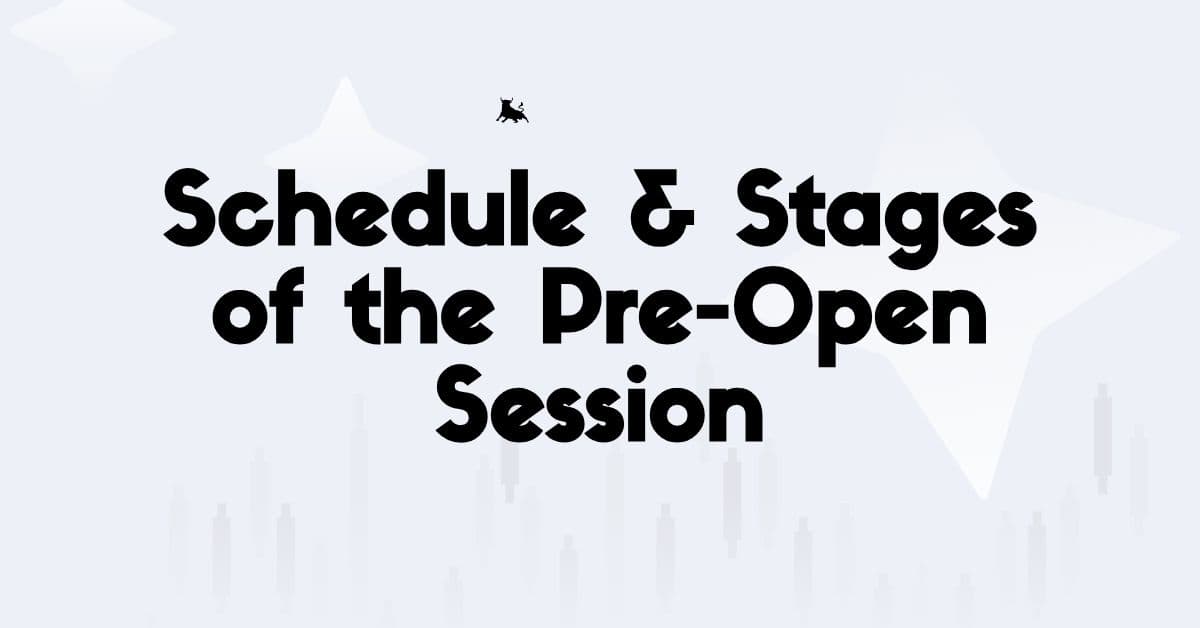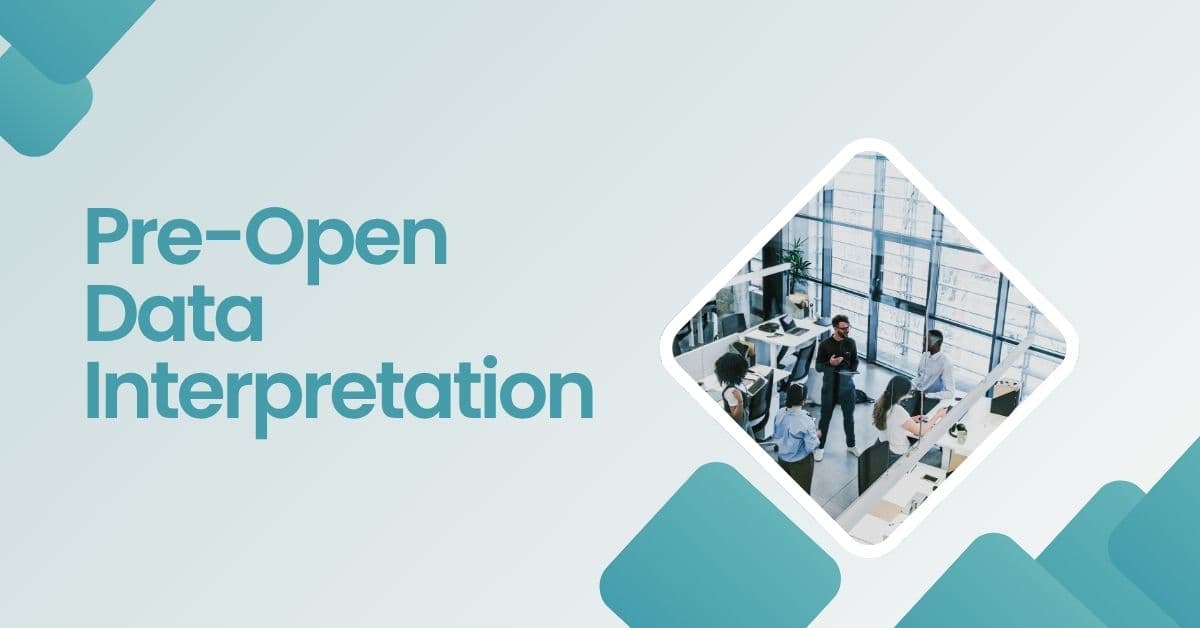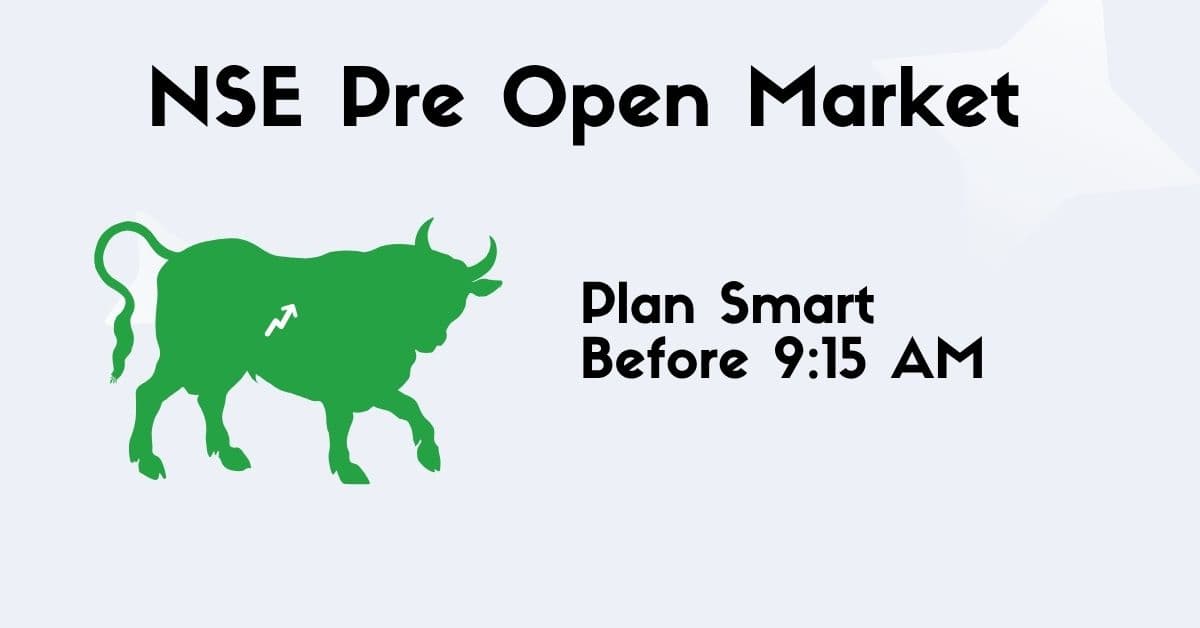NSE Pre Open Market Budgeting: Indian traders and investors use the National Stock Exchange’s (NSE) pre-open market period, which runs from 9:00 AM to 9:15 AM, to formulate their plans before the official trading session starts at 9:15 AM. By facilitating price discovery, this 15-minute window aids in determining opening stock values that are determined by supply and demand. You may budget your capital—determining how much to invest and at what prices—to maximise transactions by utilising real-time data, such as indicative opening prices and order book details. In order to ensure a disciplined approach to trading and investing, this article, which is specifically written for Indian beginners in 2025, describes the pre-open session, how to obtain its data, and useful budgeting ideas to prepare wisely before 9:15 AM.
What is the NSE Pre-Opening Market Session?
The NSE pre-open market session started in 2010 with the goal of lowering volatility and guaranteeing fair stock opening pricing. The pre-open session matches buy and sell orders at an equilibrium price, or the price at which the maximum number of shares may be sold, in contrast to the main trading period (9:15 AM–3:30 PM), when trades take place constantly. This procedure ensures a steady start to the trading day by reducing the significant price fluctuations brought on by overnight news, such as earnings releases or happenings in the worldwide market.
Schedule & Stages of the Pre-Open Session
There are two stages to the pre-open session, which runs from 9:00 AM to 9:15 AM:

- Order Collection Period: Investors can place, change, or cancel buy and sell orders (limit or market orders) during the order collection period, which runs from 9:00 AM to about 9:08 AM. According to Zerodha, this time usually ends between 9:07 and 9:08 AM.
- Order Matching Period: The exchange matches orders to establish the opening price between around 9:08 and 9:15 in the morning. The order book is used to determine the equilibrium price, and neither new orders nor changes are permitted.
| Phase | Time | Activities |
| Order Collection | 9:00 AM-~9:08 AM | Place, modify, or cancel orders |
| Order Matching | ~9:08 AM-9:15 AM | Orders matched, opening price determined |
Accessing Pre – OPEN Market Data
Real-time pre-open data, such as indicative opening prices and buy/sell amounts, is essential for efficient planning. Important sources consist of:
- NSE Website: Live information on indicative prices and order volumes for the Nifty 50 and other equities is available on the NSE Pre-Open Market website.
- Trading Apps: Pre-open data is shown by platforms like as Groww, Upstox, Angel One, and Zerodha’s Kite, and is frequently included into their dashboards.
- Financial News Portals: Moneycontrol provides pre-market information that influences NSE openings, including international market patterns and Indian ADR performance.
Advice: Verify that pre-open trading is enabled in your broker’s app settings. Some brokers turn it off by default to shield novice traders from volatility.
Pre-Open Data Interpretation
Budgeting your trades requires an understanding of pre-open data. The primary components are:

- Indicative opening price: The anticipated opening price determined by orders is known as the “indicative opening price.” Bullish sentiment is indicated by a price that is higher than the previous closing, while bearish feeling is shown by a price that is lower.
- Order Book: Displays amounts purchased and sold at different price points. Strong demand is indicated by a high buy-to-sell ratio, whereas selling pressure is suggested by a high sell-to-buy ratio.
- Nifty 50 Index: To assist you assess more general trends, the indicative Nifty 50 number represents the mood of the market as a whole.
A purchase order may be justified, for instance, if a stock’s previous close was ₹100 and the indicative price is ₹105 with 50,000 buy orders compared to 20,000 sell orders. This indicates a favourable mood.
Budgeting Your Trades Before 9:15 AM
During the pre-open session, budgeting entails preparing your trade strategy and capital allocation using market data. Here’s how to accomplish it:
Regarding Day Traders
- Determine Gainers/Losers: Stocks that have had notable price fluctuations, such as a 5% increase or decrease from the previous close, are suitable for intraday trading. For example, a stock that opens 5% higher because of good earnings can keep increasing.
- Set Limit Orders: To target particular prices, place limit orders between 9:00 and 9:08 AM. To get a better entrance, place a buy order at 104 if the indicated price is 105.
- Keep an eye on volume: strong sell volumes point to pullbacks, while high purchase volumes point to possible breakouts.
Regarding Swing Traders
- Spot Trends: Look for equities with steady purchasing activity that may indicate multi-day moves using pre-open data. For instance, a stock may be showing a trend if buy orders have increased over the course of three days.
- Modify Position Size: To manage risk, assign smaller holdings to erratic stocks based on pre-open data.
Regarding Long-Term Investors
- Time Entries/Exits: While a high price may lead to selling, a lower indicative price may indicate a chance to purchase cheap stocks.
- Capital Allocation: Based on pre-open sentiment, diversify risk by limiting exposure to 5–10% of your portfolio every stock.
Strategies for Capital Allocation
- Percentage-Based Allocation: Depending on pre-open trends, allocate 5–10% of your money to each transaction. For instance, think about increasing your allocation if a stock exhibits high purchase interest.
- Stop-Loss Planning: To minimise losses, particularly if pre-open data indicates volatility, set stop-loss orders (for example, 2–3% below the buy price).
- Balanced Portfolio: A balanced portfolio uses pre-open data to rank the most promising sectors and distributes funds across sectors to prevent overexposure.
Common Mistakes To Avoid

- Overreacting to Data: Use fundamental analysis in conjunction with pre-open prices, since they can be deceptive.
- Ignoring News: Pre-open trends may be overshadowed by world events or earnings announcements.
- Overtrading: Steer clear of placing an excessive number of orders since opening volatility might surge.
Frequently Asked Questions (FAQs)
What is the pre-open session for the NSE?
15 minutes (9:00–9:15 AM) to make orders in order to establish opening stock prices.
Is the pre-open session available to beginner traders?
Yes, however because of volatility, practise with tiny amounts and permit it through your broker.
How may pre-open data be accessed?
Use trading programs such as Zerodha or the NSE website.
Can daily trends be predicted from pre-open data?
Although it offers hints, post-opening volatility has the power to alter patterns.
Which orders am I able to place?
Market or limit orders placed between 9:00 and 9:08 AM are matched at the opening price.
An Example from Real Life
The circumstances: On June 30, 2025, Saniya, a beginning trader, keeps an eye on the pre-open session.
- Stock: XYZ Ltd., with 60,000 buy orders and 20,000 sell orders, with a previous close of ₹200 and an indicated price of ₹210.
- Action: In anticipation of a breakout, Saniya sets aside ₹10,000 (10% of her ₹1 lakh portfolio) to purchase 47 shares at a limit order of ₹209. At ₹204.80, she establishes a 2% stop-loss.
- Result: Based on pre-open data, Saniya makes a ₹235 profit when the stock starts at ₹210 and increases to ₹215.
Conclusion
You may effectively budget your transactions before 9:15 AM by using the NSE pre-open market session. You may maximise returns by making well-informed judgements by planning capital allocation, analysing market sentiment, and gaining access to real-time data. To succeed, start small, keep current, and integrate pre-open observations with more comprehensive market analysis using systems like Moneycontrol or Zerodha.
Disclaimer: There are risks associated with trading. Before making decisions, get advice from a financial professional.
HBD Financial Services Limited Budgeting Tips You Need Now!
Want to Buy Hindustan Zinc Share This Month? Fix Your Budget Today!
Oil India Share Price Target 2025: Budget Like a Pro Before the Boom!

